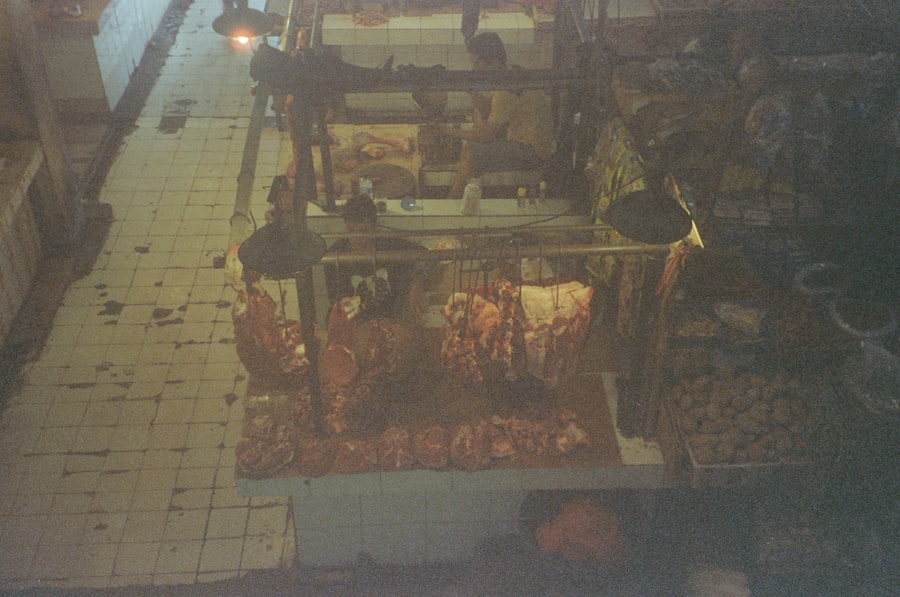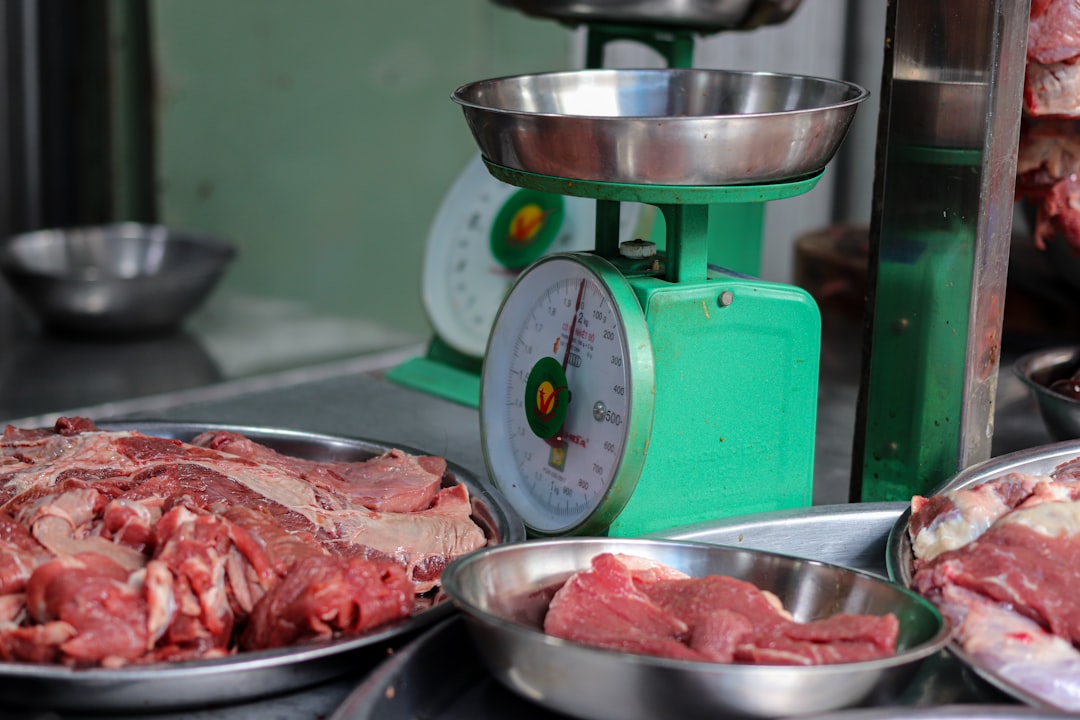Mechanically separated meat (MSM) is a product that has garnered attention in the food industry for its unique production process and its role in various food products. This type of meat is derived from the bones of animals, primarily poultry, and is processed to extract remaining meat that would otherwise be wasted. The technique involves using machinery to separate meat from bone, resulting in a paste-like substance that can be used in a variety of food applications.
While MSM is often viewed with skepticism by consumers, it plays a significant role in the economy and food supply chain, particularly in the production of processed foods. The use of mechanically separated meat raises questions about quality, safety, and nutritional value. As consumers become more health-conscious and aware of food sourcing, understanding the intricacies of MSM becomes increasingly important.
This article aims to explore the history, production process, regulations, and implications of mechanically separated meat, providing a comprehensive overview of its role in the modern food industry.
Key Takeaways
- Mechanically separated meat is a product made by using mechanical processes to separate edible meat from bones and other tissues.
- The process of mechanically separated meat has been used for centuries, but it became more widespread with the invention of industrial meat processing equipment in the 20th century.
- Regulations and safety concerns surrounding mechanically separated meat focus on the risk of bacterial contamination and the potential presence of bone fragments and other non-meat materials.
- Mechanically separated meat is commonly used in processed food products such as hot dogs, sausages, and chicken nuggets due to its low cost and high protein content.
- While mechanically separated meat is high in protein, it is also high in fat and may contain additives, making it less nutritious than whole cuts of meat.
History of the Mechanically Separated Meat Process
The origins of mechanically separated meat can be traced back to the mid-20th century when the demand for affordable protein sources surged. As populations grew and food production needed to keep pace, innovative methods were developed to maximize the use of every part of an animal. The first significant use of MSM occurred in the 1960s, primarily in the poultry industry, where it was recognized as a way to utilize leftover meat from carcasses after traditional cuts had been made.
This not only reduced waste but also provided a cost-effective solution for manufacturers. Over the decades, the process evolved with advancements in technology and machinery. Initially met with resistance due to concerns over quality and safety, MSM gradually gained acceptance as regulations were established to ensure its safe production.
By the 1980s, MSM was widely used in various products, including hot dogs, sausages, and other processed meats. The evolution of this process reflects broader trends in food production, where efficiency and cost-effectiveness often take precedence.
The Process of Mechanically Separated Meat

The production of mechanically separated meat involves several steps that transform animal bones into a usable meat product. Initially, the bones are cleaned and cooked to soften the remaining tissue. Once prepared, they are subjected to mechanical pressure using specialized equipment designed to separate the meat from the bone.
This process results in a paste-like substance that contains both muscle tissue and connective tissue. After separation, the mechanically extracted meat is often subjected to further processing to enhance its texture and flavor. This may include mixing it with seasonings or other ingredients before it is formed into products such as patties or sausages.
The final product is then packaged and distributed for consumer use. While this method allows for efficient use of animal resources, it also raises questions about the quality and integrity of the final product.
Regulations and Safety Concerns
| Regulations and Safety Concerns | Metrics |
|---|---|
| Number of safety inspections conducted | 500 |
| Number of safety violations reported | 20 |
| Number of regulatory compliance trainings conducted | 10 |
| Number of safety incidents reported | 5 |
Given the nature of mechanically separated meat, regulatory bodies have established guidelines to ensure its safety for consumption. In the United States, the Food Safety and Inspection Service (FSIS) oversees the production of MSM, requiring that it meet specific standards for processing and labeling. These regulations are designed to prevent contamination and ensure that MSM is produced under sanitary conditions.
Despite these regulations, safety concerns persist among consumers. Issues such as potential bacterial contamination and the presence of additives can lead to skepticism regarding the safety of MSM products. Additionally, there have been instances where improperly processed MSM has led to health risks, prompting calls for stricter oversight.
As consumers become more informed about food safety, transparency in production practices becomes increasingly vital for maintaining trust in mechanically separated meat products.
Uses of Mechanically Separated Meat in Food Products
Mechanically separated meat finds its way into a wide array of food products, primarily due to its cost-effectiveness and versatility. It is commonly used in processed meats such as hot dogs, chicken nuggets, and deli meats, where it serves as a filler or binder that enhances texture while keeping production costs low. The ability to incorporate MSM into various recipes allows manufacturers to create affordable options for consumers without sacrificing flavor.
In addition to traditional uses, MSM has also found a place in innovative culinary applications. Chefs and food manufacturers are increasingly experimenting with this ingredient to create unique flavor profiles and textures in their dishes. From gourmet sausages to specialty spreads, mechanically separated meat is being reimagined in ways that appeal to modern palates while still providing an economical source of protein.
Nutritional Content of Mechanically Separated Meat

The nutritional profile of mechanically separated meat can vary significantly depending on its source and how it is processed. Generally speaking, MSM contains protein along with essential vitamins and minerals found in animal tissues. However, it may also contain higher levels of fat and sodium compared to whole cuts of meat due to the inclusion of connective tissues and added ingredients during processing.
While MSM can contribute to dietary protein intake, it is essential for consumers to be aware of its nutritional content when making food choices. Many processed foods containing MSM may also include preservatives or fillers that can detract from their overall health benefits. As awareness grows regarding nutrition labels and ingredient lists, consumers are encouraged to consider not only the protein content but also the overall quality of the food they consume.
Environmental Impact of the Mechanically Separated Meat Process
The environmental implications of mechanically separated meat production are multifaceted and warrant careful consideration. On one hand, utilizing every part of an animal through MSM can reduce waste and promote sustainability within the meat industry. By maximizing resource use, manufacturers can help mitigate some environmental impacts associated with livestock farming.
Conversely, the production process itself can contribute to environmental concerns such as greenhouse gas emissions and resource depletion. The energy-intensive nature of processing and transporting MSM raises questions about its overall sustainability compared to whole cuts of meat. As consumers become more environmentally conscious, understanding these impacts will be crucial for making informed choices about their food sources.
Comparison of Mechanically Separated Meat to Whole Cuts of Meat
When comparing mechanically separated meat to whole cuts of meat, several factors come into play regarding quality, taste, and nutritional value. Whole cuts are often perceived as superior due to their recognizable form and higher quality standards associated with their production. They typically contain fewer additives and preservatives compared to processed products containing MSM.
However, mechanically separated meat offers advantages in terms of cost-effectiveness and versatility in food applications. While it may not match the quality or flavor profile of whole cuts, MSM provides an affordable source of protein that can be incorporated into various dishes without significantly impacting production costs. Ultimately, consumer preferences will dictate which option is favored based on individual values regarding health, taste, and sustainability.
Controversies and Ethical Considerations
The use of mechanically separated meat has sparked numerous controversies and ethical debates within society. Critics argue that MSM represents a form of industrialized food production that prioritizes profit over animal welfare and quality standards. Concerns about how animals are treated during processing have led some consumers to question the ethics behind consuming products containing MSM.
Additionally, there are ongoing discussions about transparency in labeling practices related to mechanically separated meat. Many consumers express a desire for clearer information regarding what they are eating and how it is produced. As awareness grows around these issues, manufacturers may need to adapt their practices to align with consumer expectations for ethical sourcing and transparency.
Alternatives to Mechanically Separated Meat
As consumer preferences shift towards healthier and more sustainable options, alternatives to mechanically separated meat are gaining traction in the market. Plant-based proteins have emerged as popular substitutes for traditional meat products, offering a range of flavors and textures without relying on animal sources. These alternatives appeal not only to vegetarians and vegans but also to those seeking to reduce their meat consumption for health or environmental reasons.
In addition to plant-based options, there is also a growing interest in lab-grown meats that aim to replicate the taste and texture of traditional meats without the ethical concerns associated with animal farming. These innovations represent a significant shift in how society approaches protein consumption and may eventually provide viable alternatives to mechanically separated meat products.
Understanding the Role of Mechanically Separated Meat in the Food Industry
Mechanically separated meat occupies a complex position within the food industry landscape. While it offers economic benefits by reducing waste and providing affordable protein sources, it also raises important questions about quality, safety, and ethical considerations. As consumers become more discerning about their food choices, understanding the nuances surrounding MSM will be crucial for making informed decisions.
The future of mechanically separated meat will likely depend on evolving consumer preferences and regulatory frameworks aimed at ensuring safety and transparency in production practices.
Ultimately, fostering an informed dialogue about mechanically separated meat will empower consumers to navigate their choices within an increasingly complex food environment.
Mechanically separated meat (MSM) is a process that has been widely used in the food industry to efficiently utilize meat from bones, particularly in poultry and pork products. This process involves forcing bones with attached edible meat through a sieve or similar device under high pressure to separate the bone from the meat tissue. For those interested in learning more about the intricacies and implications of this process, a related article can be found on Hey Did You Know This. You can read more about it by visiting this link.
WATCH THIS! 🌭The 100-Year Scam That Invented Hot Dogs
FAQs
What is the mechanically separated meat process?
The mechanically separated meat process is a method used to separate meat from bones and connective tissue using mechanical means such as pressure and centrifugal force.
What types of meat are typically used in the mechanically separated meat process?
The mechanically separated meat process is commonly used with poultry, such as chicken and turkey, as well as with pork and beef.
Is mechanically separated meat safe to consume?
Mechanically separated meat is considered safe to consume when it is produced and handled according to food safety regulations. It is important to ensure that the meat is properly cooked to kill any potential bacteria.
What products are made from mechanically separated meat?
Mechanically separated meat is commonly used in processed meat products such as hot dogs, sausages, and lunch meats. It is also used in pet food and some food products as a source of protein.
Are there any concerns about the use of mechanically separated meat?
There have been some concerns raised about the use of mechanically separated meat, particularly in terms of its nutritional content and potential for bacterial contamination. However, when produced and handled properly, mechanically separated meat can be a safe and cost-effective source of protein.
